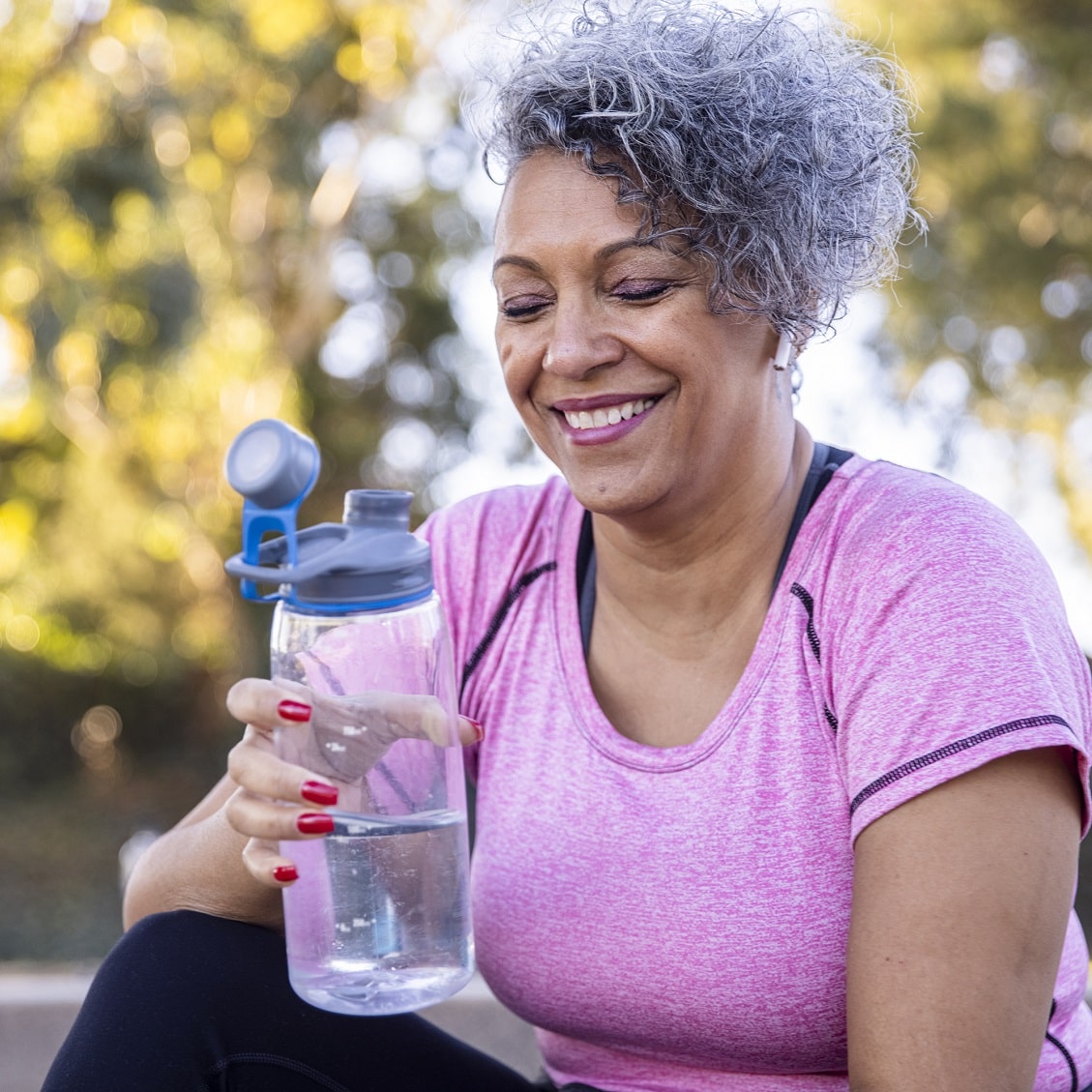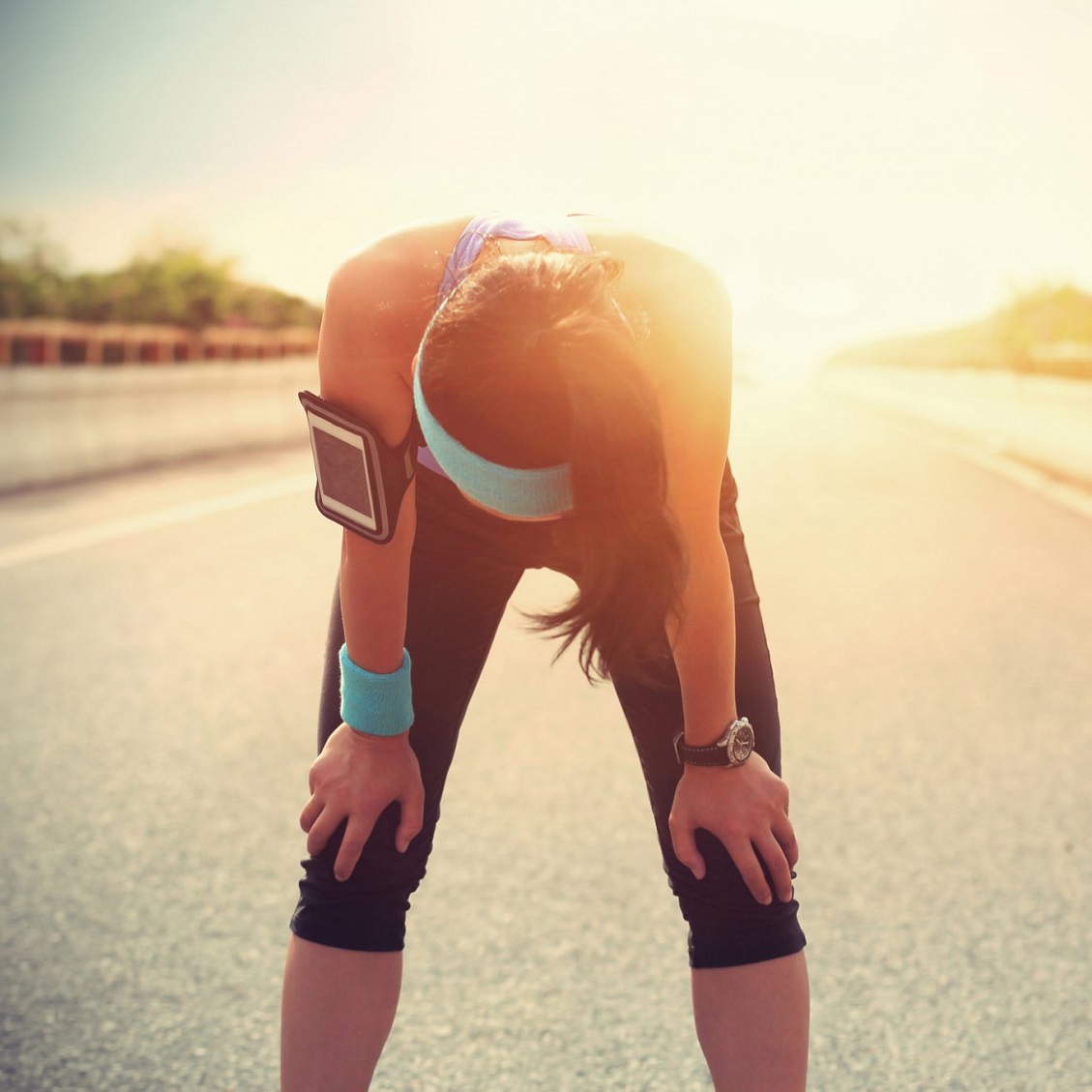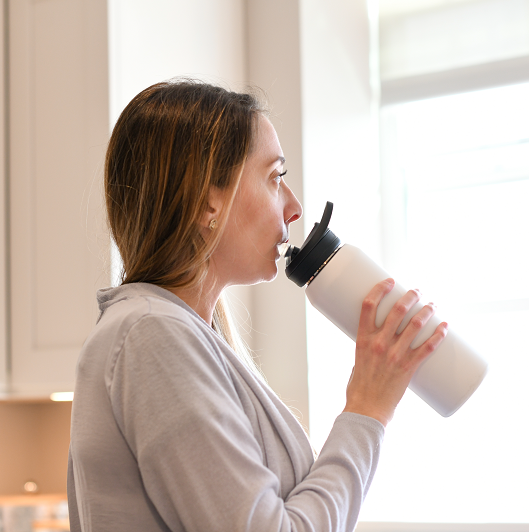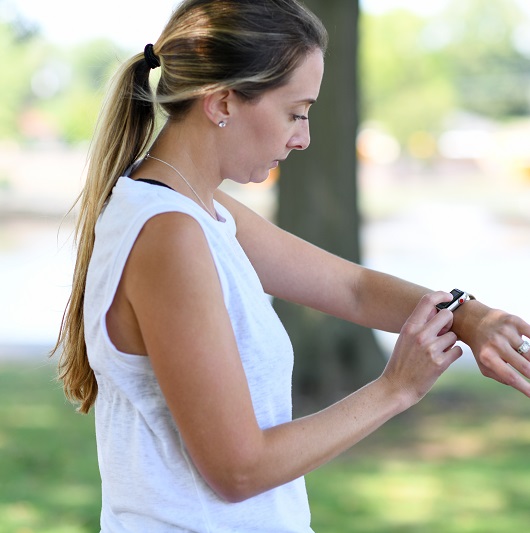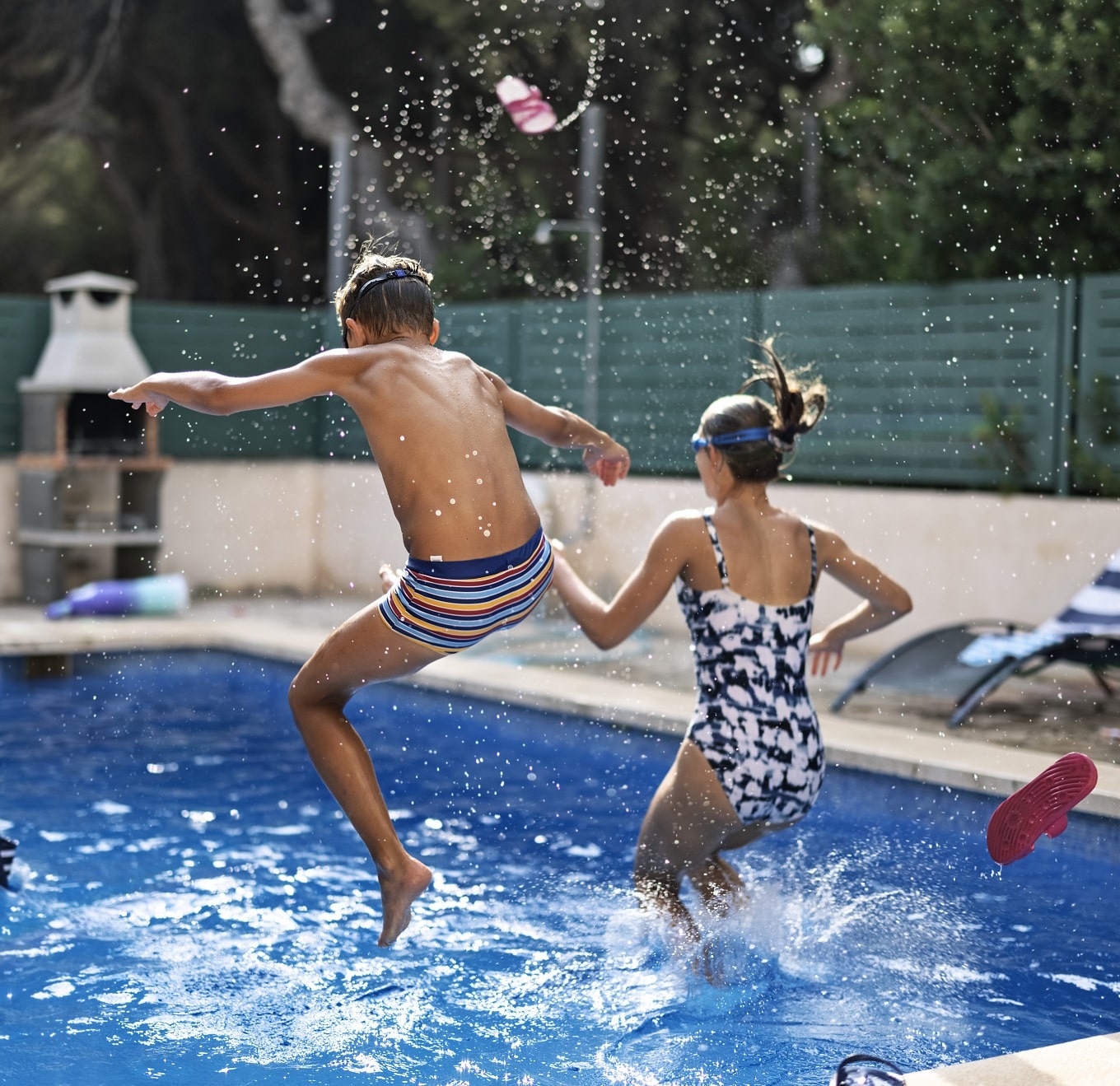Preventing Heat Stroke: Hydration and Cooling Techniques for Hot Days
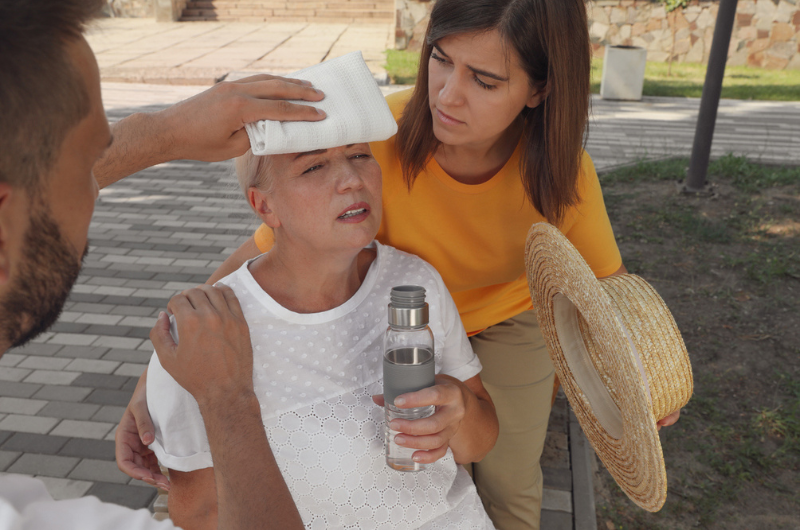
June 19, 2025
Ever felt dizzy or weak after spending time in the heat, even with water in hand?
While many people know to drink fluids on hot days, staying safe from heat-related illness takes more than just sipping water. According to Hackensack Meridian Health family medicine doctor Zain Nagaria, M.D., heat exhaustion and heat stroke are more common – and more dangerous – than most people realize.
“Heat exhaustion could happen to really anybody,” says Dr. Nagaria. “Heat stroke is a little bit more severe, and that tends to be a medical emergency.”
What’s the Difference Between Heat Exhaustion & Heat Stroke?
Heat exhaustion is the body’s early warning system. It typically develops after prolonged exposure to high heat or activity in hot conditions, and internal temperatures usually stay under 104°F.
Heat stroke, on the other hand, is much more serious. “Once your internal body temperature gets above 104°F and your body can’t regulate itself, that’s when it turns into a heat stroke,” says Dr. Nagaria. “It limits oxygen and blood flow to the rest of the body, and then the kidneys, liver and brain can all be affected.”
Signs of heat exhaustion may include:
- Cool, clammy skin
- Dizziness or weakness
- Headache
- Heavy sweating
- Nausea or vomiting
Signs of heat stroke may include:
- Body temperature over 104°F
- Confusion or altered mental state
- Fainting
- Rapid heartbeat
- Red, hot, dry skin (no more sweating)
If you or someone else shows signs of heat stroke, call 911. It’s a medical emergency that can lead to permanent damage – or worse – if not treated quickly.
Who’s Most at Risk for Heat Stroke?
While anyone can suffer from heat illness, some people are more vulnerable, including:
- Athletes and outdoor workers
- Infants and young children
- Older adults, especially those with limited mobility or chronic conditions
- People taking certain medications (diuretics, antihistamines, antidepressants)
Heat-related illness is the third leading cause of death in high school athletes, according to the American Academy of Family Physicians.
How Do You Prevent Heat Stroke?
Since heat stroke is so serious (and scary), what are the smartest strategies for avoiding it? You don’t have to cancel summer plans, but a few wise choices can make a big difference. Dr. Nagaria recommends these key strategies:
Time your outdoor activity carefully
The midday sun can be brutal. If possible, try to avoid being outside between 10 a.m. and 4 p.m., which is the hottest stretch of the day. If you have to be outdoors during those hours, take breaks often and find shade whenever you can. It’s not just about staying cool; it’s about giving your body time to recover.
“Your core temperature can rise quickly when you're exposed to high heat and humidity,” Dr. Nagaria explains. “If your body can’t cool itself efficiently, you can get into trouble fast.”
Don’t forget to check your local weather for heat advisories or excessive heat warnings. Those alerts exist for a reason.
Dress for the heat
Wearing the wrong clothing can increase your risk of overheating. When it’s hot out, reach for lightweight, breathable fabrics like cotton or moisture-wicking athletic wear. Light colors are better than dark ones because they reflect sunlight rather than absorb it.
Breathable fabrics like linen or moisture-wicking synthetics allow sweat to evaporate efficiently while keeping UV rays at bay. This is a wise strategy for everyone, but especially for older adults or outdoor workers who are exposed to the sun for long stretches of time.
Another tip? Layering. It may seem counterintuitive, but Dr. Nagaria points out that “lightweight, long-sleeved clothing can actually help regulate body temperature by shielding the skin from direct sun exposure.”
Stay ahead of dehydration
One of the most important things you can do is keep your body well-hydrated. When temperatures rise, your body works overtime to cool itself through sweating, and if you’re not replenishing those lost fluids, your internal cooling system starts to fail.
“You should be drinking water consistently throughout the day – not just when you’re feeling thirsty,” says Dr. Nagaria. “Thirst is actually a sign that your body is already becoming dehydrated.”
While plain water is ideal, if you're sweating a lot, opt for drinks that contain electrolytes to replace what your body is losing. Avoid alcohol and caffeinated drinks, which can make you dehydrated faster. Caffeine and alcohol act as diuretics, which can increase fluid loss.
Opt for cool environments
Air conditioning isn’t a luxury when it comes to preventing heat-related illness – it’s a critical safety tool. If your home isn’t air-conditioned, find other options: spend time in a shopping mall, library, or designated cooling center during the hottest part of the day.
“Staying in an air-conditioned environment is one of the most effective ways to reduce the risk of heat stroke,” says Dr. Nagaria.
Create a “cooling circuit” at home
Strategic airflow can help lower indoor heat accumulation. If air conditioning isn’t available or is being conserved, Dr. Nagaria suggests creating a cooling circuit in your home.
“Close curtains or blinds during the hottest part of the day and then open windows at night to let cooler air circulate,” he says. “Use fans near windows to help pull in the night air.”
Use cold water the smart way
When you’re overheated, a cold shower might seem like the obvious answer – and it can help – but there’s a smarter approach. Instead of jumping straight into icy water, try a gradual cooldown.
“Immersing your feet or hands in cool (not freezing) water can quickly bring your core temperature down without shocking your system,” says Dr. Nagaria. This is especially helpful for older adults or people with heart conditions, where sudden temperature changes can cause strain.
Even running cool water over your wrists, splashing your face, or placing a damp washcloth on pulse points — such as the back of the neck, inner elbows or behind the knees — can provide rapid relief without overdoing it. These spots help cool blood faster as it circulates through your body.
Understand how medications and health conditions affect heat tolerance
Some people are more vulnerable to heat than others, and it’s not always obvious why. Certain medications, including diuretics, antihistamines and some blood pressure or psychiatric meds, can impair your body’s ability to cool itself.
“People with chronic conditions such as heart disease, obesity or diabetes need to be especially cautious,” Dr. Nagaria notes. “These conditions can make it harder for the body to regulate temperature.”
If you’re on daily medication or managing a health condition, talk to your doctor about how heat might affect you and what precautions to take.
Final Takeaways: Heat Stroke Can Happen to Anyone
Heat-related illness doesn’t just strike marathon runners or outdoor workers – it can happen even during ordinary daily routines. And while we all know to drink water and wear sunscreen, Dr. Nagaria’s insights remind us that real prevention goes deeper:
- Dress smart and shield your skin; apply sunscreen with SPF 15 or higher
- Hydrate before you’re thirsty
- Watch for how meds and medical conditions affect your heat tolerance
- Use your environment to your advantage (whether that’s creating airflow at home or soaking your feet in cool water)
The bottom line? Don’t underestimate the heat. With a little planning, you can enjoy the summer sun safely without letting it turn into something dangerous like heat stroke. Before you head out the door, ask yourself: Is my body ready for this heat?
Next Steps & Resources
- Meet our experts: Zain Nagaria, M.D.
- To make an appointment with a doctor near you, call 800-822-8905 or visit our website.
- Explore our primary care services.
The material provided through HealthU is intended to be used as general information only and should not replace the advice of your physician. Always consult your physician for individual care.


